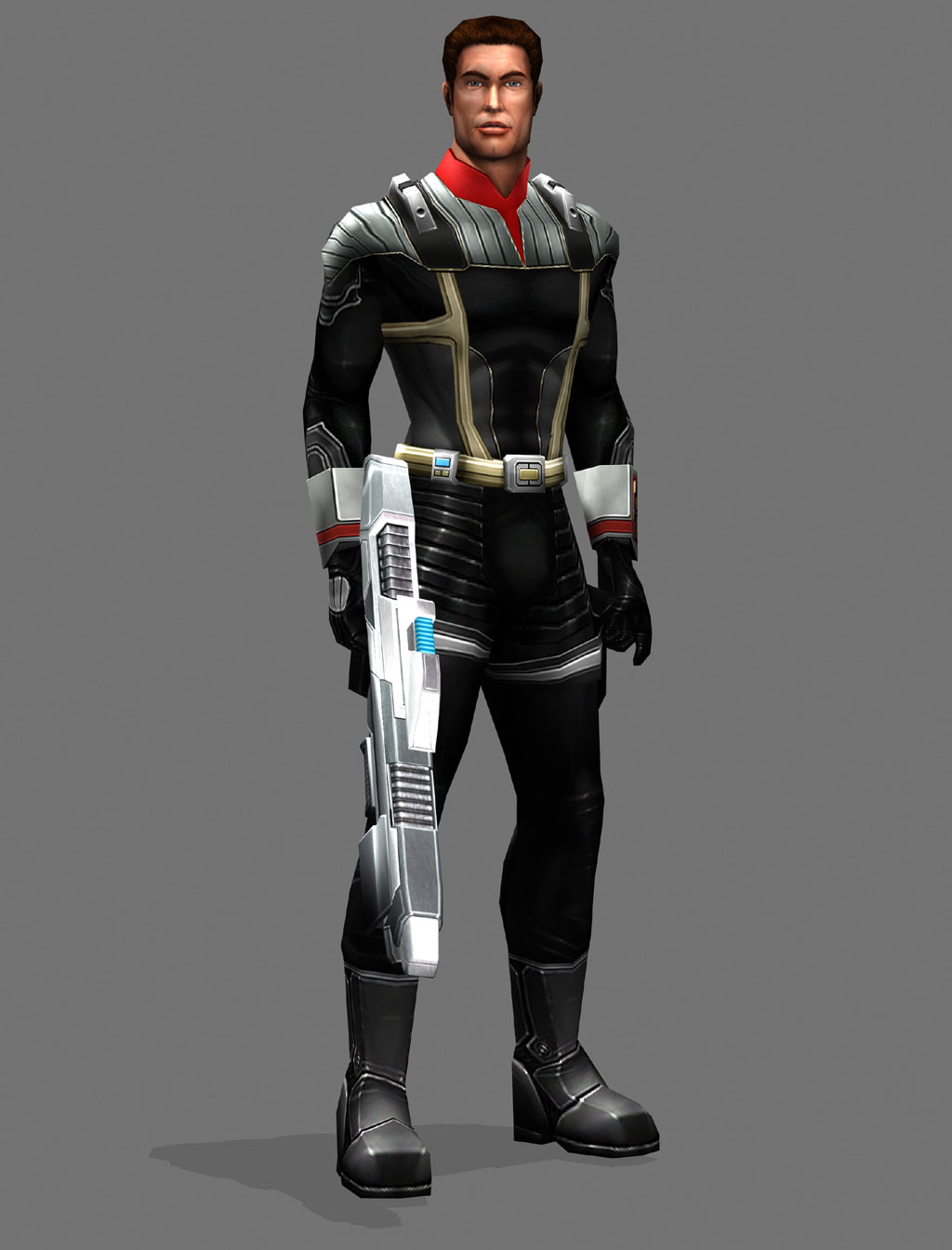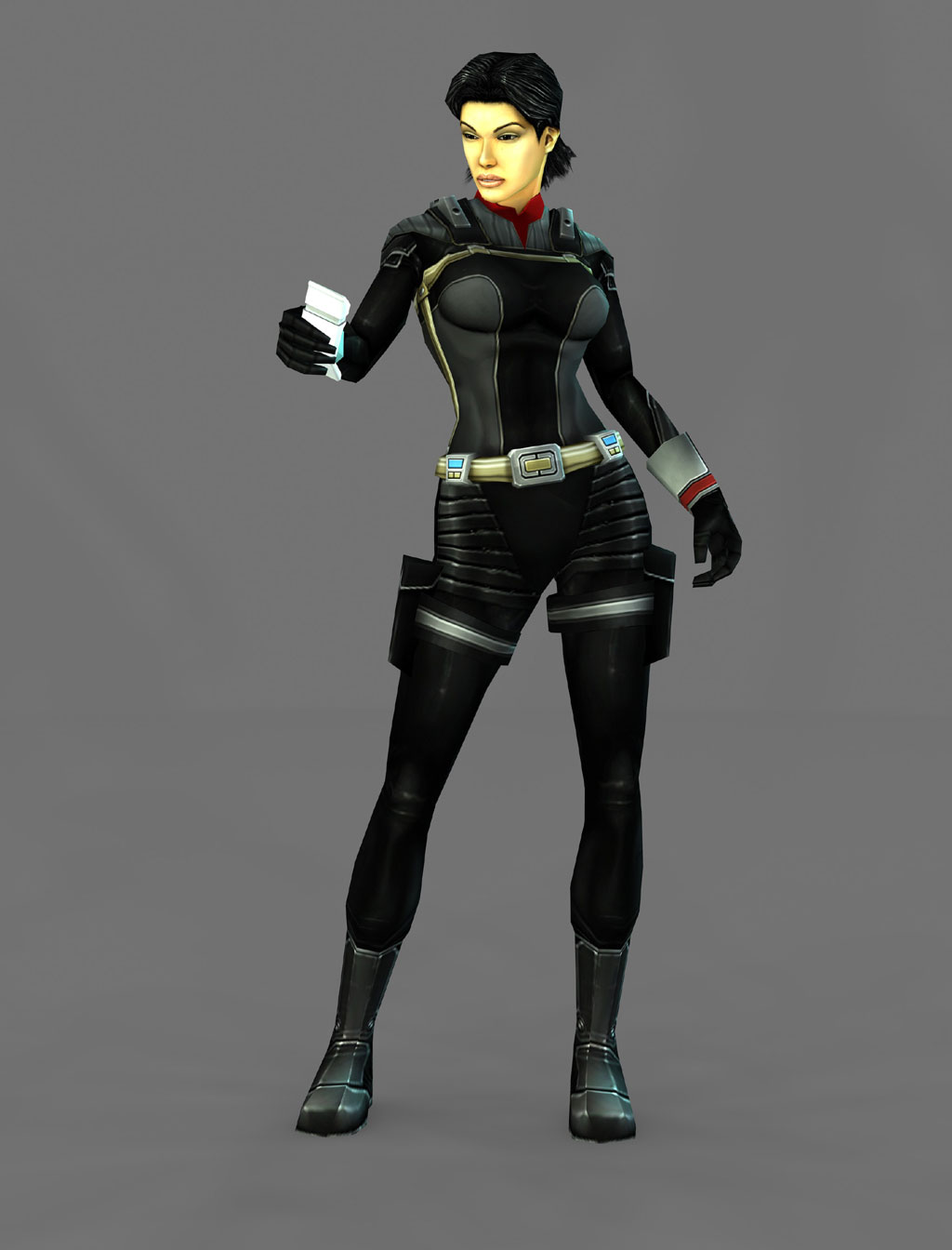

Combined Engagement And Rescue Teams
An Overview of the
Starfleet CEAR Team's
One of the most overlooked aspects of the Fleet is the need of
the Starfleet's to have a peacekeeping force, which is fast
moving and hard-hitting; troops which are essentially
"ground-based" and designed to handle situations that
cannot be efficiently solved in any other manner.
Starships of all types are superb for exploration and defense,
but there are often times when they supply simply too much power
for the job at hand. Power enough to devastate a planet is
horrifyingly wonderful, but when something is needed to settle a
simple planetary dispute, calling in a starship is like burning
down the barn to get rid of the rats.
So the Starfleet must have a force of men and arms, which can
operate efficiently on a relatively small scale, in a short
amount of time, and within the laws, and guidelines of the
Starfleet Articles. This group is the Fleet's CEAR Team's.
The CEAR Team's are an integral part of the Starfleet Forces.
Acting under Fleet Command, they work with starships and other
vessels in exploration, defense, and security. But they are also
quite autonomous, as CEAR Team's exercises are often undertaken
far from the nearest base or command center.
CEAR Teams's Missions:
Unconventional Warfare: guerrilla warfare, urban warfare and
other direct-offensive, low-visibility, covert, or clandestine
operations, as well as the indirect activities of subversion,
sabotage, intelligence activities, and evasion and escape. These
are all included in Unconventional Warfare.
Long Range Reconnaissance: Conduct reconnaissance deep in enemy
territory to obtain, or verify information concerning the
capabilities, and intentions of a potential enemy. Also this
reconnaissance is to secure data concerning characteristics of
that particular area as well.
Counter Terrorism: Resolve terrorist actions when directed by
Starfleet Command or the appropriate unified commander, or when
requested by Starship or Stations.
Search and Rescue: Penetrate planetary or station defense systems
and conduct a rescue operation deep within hostile or denied
territory to recover distressed personnel during wartime or
contingency operations.
Training and Recruitment:
Applicants for CEAR must pass many physical and mental test even
before they begin to start their training. The Special Forces
school is well over a year long for training, and only the first
20 weeks are spent in a basic training type environment. By the
end of this time frame out of 100 trainees only about 15-20 are
left in the program. After that it is another 18 weeks in
different survival, and jump schools. The last 22 weeks are then
spent on a specialty school. Even all that is done the CEAR
members are then sent to Starships or Stations near Trouble Spots
for the period of one year to hone their skills.
Assignments:
Standard Assignments for CEAR teams is on either Stations or
Large Starships. This is due to the limited number of CEAR
personal. CEAR platoons consist of two six-member squads and one
officer over head to run both. A standard squad has at least one
medic, sniper, pilot, heavy weapons, engineer, and one espionage
specialist. Of course this is just a guideline and hardly the
rule.
Composition:
The CEAR Team's are a handpicked group of tough fighting
veterans. They hold immense pride in being CEAR Team members, and
rightfully boast that it is harder to join their number than it
is to get into any other Fleet branch.
Starfleet CEAR Teams are constructed around squads. Fleet CEAR
total complement is roughly fifty thousand troops. Not seemingly
a large number for all the space they have to cover, but because
of the caliber of the men and thoroughness of they're training,
quite sufficient.
As the CEAR Team's are basically a strike force called in for
policing and peacekeeping action, not more than one team is
usually needed for a specific job. In fact, many CEAR Team's
assignments are handled by an even smaller number of troops,
sometimes as few as two or three squads. Doing the job with the
least amount of manpower possible is a basic tenet of CEAR Team's
practice and tradition. An old CEAR joke goes like this: A
Starfleet governor called for a CEAR Team's for help in quelling
a miners' riot on his planet. When a Starfleet ship arrived, the
governor was aghast to see only one CEAR operative beam down.
When the governor started to demanded why Starfleet only sent one
man, the CEAR operative answered, "There's only one riot,
isn't there?"
As you can see, the CEAR Team's pride themselves on their
efficiency in peacekeeping. They hold a haughty disdain for their
brothers assigned to starship duty, referring to it as "milk
runs"; they have even less regard for regular starship
crewmembers, whom they scornfully call "space jockeys".
Many a bar side brawl has started when CEAR Team and regular
Fleet spacers
get together, and the Fleet hierarchy often goes to great lengths
to keep them apart. As one beleaguered Admiral put it, "I
only wish our boys would fight the (deleted for security reasons)
with as much gusto as they fight each other."
But such brawls usually end up with the CEAR Team's and starship
men allied against a common foe: Security. "Spoilsport"
is about the nicest term that has ever been hurled at security
forces when they move in to break up an altercation; and this
usually leads to the hurling of other objects, such as fists,
bottles, and chairs. Although security troops are specifically
chosen
for their toughness, even they think twice about taking on a CEAR
Team's deep in his cups, and ready for a good fight. It is not
surprising, however, that a large majority of CEAR Team's
transferred in from security. It makes an excellent training
ground.
One of the simpler exercises is to disintegrate a coin shaped
metal disk at a hundred yards... as it is launched like a clay
pigeon. Others are much harder, such as stunning one person as he
runs through a crowd. This is done at a hundred feet, in twilight
and under the worst possible atmospheric conditions.
As situations do arise that require CEAR Team's action on a
planet whose conditions are too severe for standard atmosphere
belts, trainees must perform all exercises in full space suits
before graduation. It is not uncommon for the boot CEAR Team's to
find himself in the simulated conditions of a methane-gas
atmosphere with a suit that suddenly malfunctions. If he cannot
repair his suit before he succumbs, he washes out and is
transferred back to his old outfit... after he gets out of the
hospital, that is.
Basic weaponry carried by a CEAR Team's into action are a hand
phaser Type II, either a phaser rifle, a vibroblade (neutron
knife), communicator, and possibly several small-scale photon
grenades. This is in addition to survival gear and rations,
although not a great deal of these items are needed, CEAR Team's
preferring to "live off the land" whenever possible.
Other kits carried by CEAR Team's with specific duties includes a
scouting tricorder, medical supplies, long-range communications
equipment, photon mortars, laser cannonry, and limited force-
field generators.
A CEAR Team's combat uniform consists of a new lightweight body
armor. This new body armor is made with a revolutionary process
to create a Raesthex and crystaline mesh. This allows for
beneficial movement, while decreasing constriction as well as
giving the armor other benefits.
The material is able to decrease or stabilize the body's
temperature from outside sources (-50Co to 180Co). Without out
having to seek aid from outside sources. This suit is also
capable of absorbing an energy discharge of 15,000 MW (equivilent
to a phaser on setting 8) for 2.54 seconds.
Gravity boots capable of
being modified for whatever conditions are warrented are also
standard issue with this lightweight armor.
1. One of the items on the suit's utility belt is a mini-pattern
buffer. This is combined with the technology of the emergency
transport arm band and is used for storage of different items. An
example of this would be the short-term storage of a matter
stream. However, because of it's limited memory size, the pattern
buffer is capable of storing only smaller items such as weapons,
tricorders, helmets etc. The pattern Buffer's memory and power
capability can store a maximum of nine items for a period of up
to 12 hours with requiring a recharging phase.
2. A Second item on the utility belt is an energy pack that can
be used to provide emergency power to any Federation device.
3. A Power Converter that enables Starfleet personel to tap into
alien power systems and allow them to use that energy to recharge
Federation equipment.
4. Multi-Phasic Wave Generators: Used to disrupt lock on of
unfriendly transporters
5. Ration Packs


CEAR Team's are very
self-supporting. Every CEAR Team holds special training in a
profession of their choice, though they are always a rifleman
first. A squad of eleven solders can easily have their own
Medical Officer-equivalent, Engineer, Xenobiologist,
Navigator-Pilot, Xeno-Technologist, Physicist, or any specialty
that may be carried on a Starship, for example.
The use of CEAR Team's on a starship is rather limited; as such a
ship carries a large and well-trained number of security forces.
However at least one squad of CEAR operatives are always aboard.
When their skills are needed, they are usually needed
desperately, and it is not unusual for a captain to give the
ranking CEAR TEAMS temporary control over all his able-bodied men
in a crisis situation.
CEAR personnel use the same weapons as that of normal Starfleet
Officers. The only exception is the few weapons that they have
gotten from R&D. The R&D weapons where specifically
designed for CEAR and will never be released
for normal Starfleet operations. CEAR Team's are constantly
drilled in the use of the latest and most deadly weapons that
Fleet can devise. One of the first requirements for admission to
CEAR Team's training is to qualify as an expert marksman. To do
so is very difficult, as it requires pinpoint use of a phaser
(both hand and rifle) at distances of up to 500m.
Common Weapons:
SIL-17 Blades
Weight:
Length:
Notes: Cut with a with a micro-fusion cutter, and made of
Tritainum. Blades can cut through with deadly accuracy. To add to
their lethality they are then coated with an energy barrier to
add to their slashing potential. Blades are housed on special
bracers that can be found on the user's forearms
Optional Weapons:
XEM-720 18mm Assualt Rifle
with grenade launcher
Weight:7.6 lbs
Range: 500 ft.
Rate of Fire: single shots
Payload: 50 round drum clips, 5 Photon grenades
Notes: The XEM-720 is a modified version of the portable
rail gun. It is rather simple, it fires a simple projectile made
of Tritainium on a electro-magnetic beam at nearly the speed of
light.

Equipment:
Visual Data Recorder
Weight: .5 lbs
Notes: The Visual Data Recorder or VDR is a device that is worn
by the CEAR team. The VDR has various uses to include the ability
to categorize, identify, and track numerous targets in the wears
visual range. The information gathered by these VDR's can be
shared with other VDRs, and has proved invaluable in many combat
situations. Another feature to the VDR is that it has a built in
targeting system to help the CEAR team's shooting abilities.